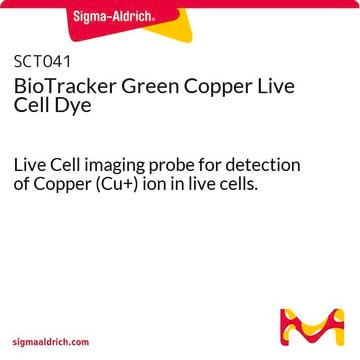MAK127
Copper Assay Kit
sufficient for 250 colorimetric tests
Synonyme(s) :
Copper Test Kit
About This Item
Produits recommandés
Utilisation
sufficient for 250 colorimetric tests
Méthode de détection
colorimetric
Maladie(s) pertinente(s)
orthopedic diseases; aging/geriatric diseases; hematological disorder; gastrointestinal diseases; neurological disorders; dermatological diseases
Température de stockage
2-8°C
Catégories apparentées
Description générale
Application
Caractéristiques et avantages
Adéquation
Principe
Mention d'avertissement
Danger
Mentions de danger
Conseils de prudence
Classification des risques
Aquatic Acute 1 - Aquatic Chronic 1 - Eye Dam. 1 - Met. Corr. 1 - Skin Corr. 1A - STOT SE 3
Organes cibles
Respiratory system
Code de la classe de stockage
8B - Non-combustible corrosive hazardous materials
Classe de danger pour l'eau (WGK)
WGK 3
Point d'éclair (°F)
Not applicable
Point d'éclair (°C)
Not applicable
Certificats d'analyse (COA)
Recherchez un Certificats d'analyse (COA) en saisissant le numéro de lot du produit. Les numéros de lot figurent sur l'étiquette du produit après les mots "Lot" ou "Batch".
Déjà en possession de ce produit ?
Retrouvez la documentation relative aux produits que vous avez récemment achetés dans la Bibliothèque de documents.
Notre équipe de scientifiques dispose d'une expérience dans tous les secteurs de la recherche, notamment en sciences de la vie, science des matériaux, synthèse chimique, chromatographie, analyse et dans de nombreux autres domaines..
Contacter notre Service technique










